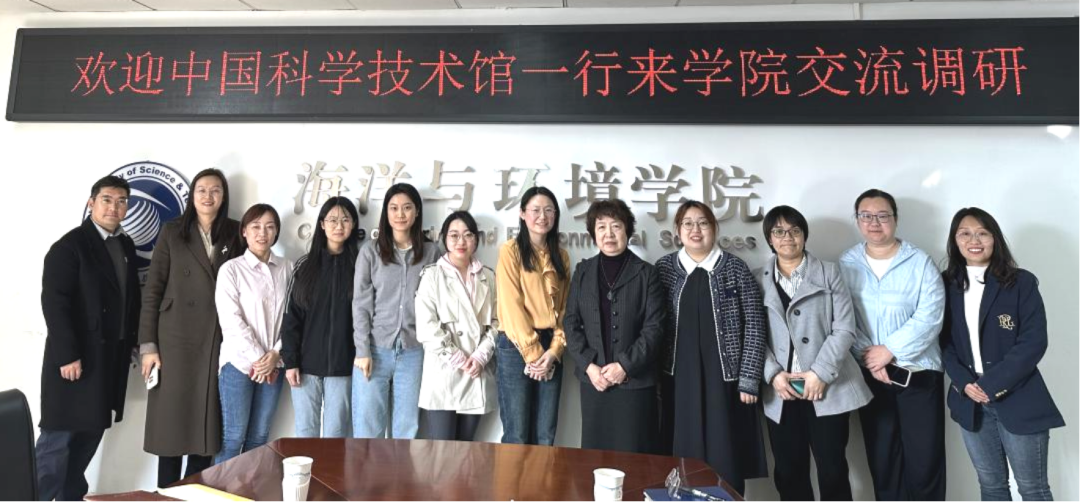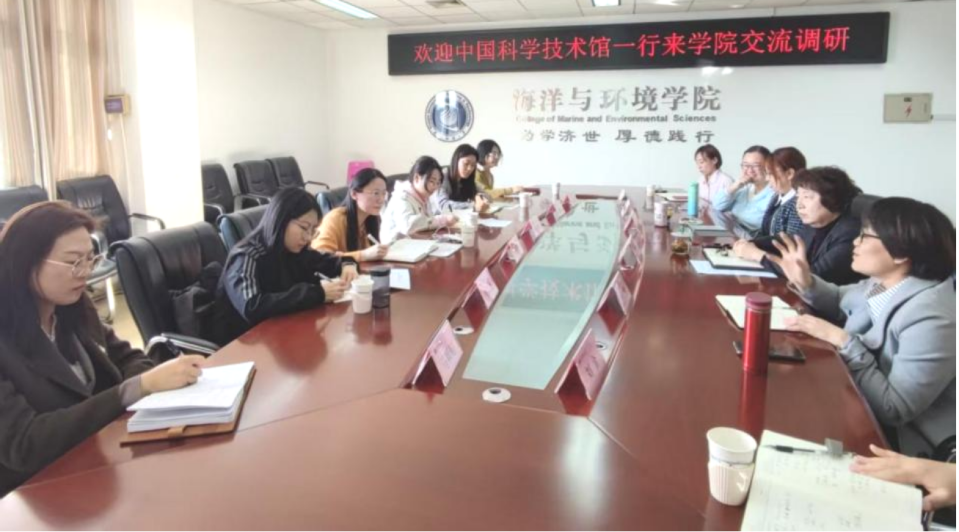
Announcement
China Science and Technology Museum Visits College of Marine and Environmental Sciences to Collaborate on Maritime Power Popular Science Edu
To further implement China’s maritime power strategy and advance national marine science education, representatives from the China Science and Technology Museum (CSTM), led by Gao Mengwei of the Exhibition and Education Center, visited the College of Marine and Environmental Sciences at Tianjin University of Science and Technology on April 2. The two parties held discussions on the development of educational resources for the themed exhibition Harmony Between Humanity and the Sea: From Fear to Symbiosis. Vice Dean Chen Guirong, department heads, and faculty representatives attended the meeting.

During the meeting, representatives from the college’s marine science departments showcased research achievements in high-value utilization of brine resources, carbon sink studies, microalgae industrialization, Bohai Bay ecological monitoring, and marine disaster early warning systems. Leveraging the educational foundation of the Asia Regional Artemia Reference Center, they proposed engaging biological experiments on brine shrimp and explored innovative approaches to science education through disaster prevention and mitigation perspectives. Environmental science faculty highlighted cutting-edge research on marine microplastic pollution control, integrating practices from the Tianjin Marine Environmental Protection and Restoration Center and the Global Arundo Carbon Neutrality Industry Alliance. They proposed a novel framework for coastal ecological restoration and carbon neutrality technologies in public outreach, suggesting the establishment of the Tianjin Binhai Ecological Restoration Demonstration Base as a specialized research-education hub. By centering on the theme Harmony Between Humanity and the Sea, the initiative aims to synergize scientific research, education, and public participation.

The two sides engaged in in-depth discussions on developing marine science courses, collaborative research directions, and resource sharing, fostering dynamic exchanges of ideas.
Following the meeting, the CSTM delegation toured the Marine Storm Surge Virtual Simulation Platform and the Asia Regional Artemia Reference Center. Gao Mengwei praised the college’s integration of advanced marine technologies with science education. Both parties agreed to collaborate on curriculum development, resource sharing, and joint activities to create a scientifically rigorous yet engaging marine education brand, offering the public a vivid perspective on China’s maritime power strategy.


This symposium exemplifies the college’s proactive implementation of the university’s PIONEER PROGRAM, demonstrating its commitment to translating national maritime strategies into accessible science education and elevating public understanding of marine science.

